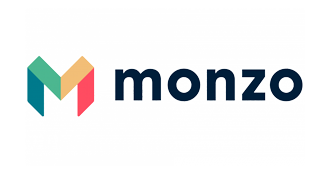Are you looking for a way to make your business debt more manageable and reduce the cost of borrowing? The concept of debt refinancing may be the key to achieving these goals.
Here, we will explain what debt refinancing is, how it works and how it could help you navigate management of your finances in difficult times.
Featured pro tools
Best business debt refinancing providers UK
| Loan provider | Minimum loan | Maximum loan | Maximum term |
|---|---|---|---|
ABC Finance | £500 | £1,000,000 | 5 years |
ArchOver | £100,000 | £5,000,000 | 3 years |
Aspire Business Loans | £5,000 | £300,000 | 5 years |
Atom Bank | £100,000 | £5,000,000 | 6 years |
Bank of Scotland | £1,000 | £1,000,000 | 25 years |
Barclays | £1,000 | £100,000 | 10 years |
Bibby Financial Services | n/a | n/a | 2 years |
Bluestar Leasing | £5,000 | n/a | 5 years |
Braemar Finance | n/a | n/a | n/a |
Capify | £5,000 | £500,000 | 12 months |
CapitalBox | £2,000 | £50,000 | 18 months |
Catalyst Finance | £25,000 | £1,000,000 | 12 months |
ClearFunder | £10,000 | £100,000 | 12 months |
Close Brothers | n/a | n/a | n/a |
Clydesdale Bank | £25,001 | £10,000,000 | 15 years |
Co-operative Bank | £1,000 | £250,000 | 15 years |
Cubefunder | £5,000 | £100,000 | n/a |
Fleximize | £5,000 | £500,000 | 4 years |
Folk 2 Folk | £50,000 | n/a | 5 years |
Funding Circle | £2,000 | £250,000 | 6 years |
Hitachi Capital | £10,000 | £500,000 | 5 years |
Hope Capital | £50,000 | £5,000,000 | n/a |
HSBC | £1,000 | £25,000 | 20 years |
Huddle Capital | n/a | n/a | 12 months |
Independent Growth Finance | n/a | n/a | n/a |
inFund | £5,000 | £150,000 | 12 months |
Intelligent Loans | £10,000 | £250,000 | 5 years |
Iwoca | £50,001 | £250,000 | 3 years |
LendingCrowd | £5,000 | £500,000 | 5 years |
Liberis | £50,001 | £150,000 | 2 years |
Lloyds Bank | £1,000 | £1,000,000 | 25 years |
Market Finance | £5,000 | £250,000 | 3 years |
Merchant Money | £5,000 | £500,000 | 2 years |
Metro Bank | £2,000 | £25,000,000 | 30 years |
NatWest | £1,000 | £10,000,000 | 25 years |
Novuna | £10,000 | £500,000 | 5 years |
Nucleus Commercial Finance | £10,000 | £250,000 | 6 years |
PFC Finance | £5,000 | £1,000,000 | 5 years |
Rangewell | n/a | n/a | 5 years |
Rebuildingsociety.com | £25,000 | £250,000 | 5 years |
Royal Bank of Scotland | £1,000 | £10,000,000 | 25 years |
Santander | £2,000 | £25,000 | 5 years |
Satellite Finance | £3,000 | £1,000,000 | 10 years |
Spotcap | £50,000 | £350,000 | 24 months |
Starling Bank | £5,000 | £20,000 | 5 months |
Start Up Loans | n/a | £25,000 | 5 years |
ThinCats | £1,000,000 | £15,000,000 | n/a |
White Oak | £2,000 | £500,000 | 5 years |
What is debt refinancing?
Debt refinancing is the process of replacing an existing loan with a new loan that offers better terms and conditions. This can include lower interest rates, different repayment schedules, or even combining multiple loans into one. Refinancing can help borrowers save money on their debt by reducing their monthly payments and overall cost over time.
It can also help borrowers consolidate their debt in order to simplify their financial situation.
In addition, debt refinancing can provide extra funds that can be used for other purposes such as investments or home improvements. Refinancing is typically done when interest rates are low and the borrower’s credit score has improved since taking out the original loan. However, it is important to note that refinancing can also extend the term of a loan and increase the total amount of interest paid over time.
 |
Wallester Business ✓ Virtual & Physical Cards ✓ No Setup Fees ✓ No Monthly Fees Pricing Trial period Contact |
|
 |
Revolut Business ✓ Business Current Account ✓ Award-Winning Mobile App ✓ Quick & Easy Application Process Pricing Trial period Contact |
|
 |
Tide Business Bank Accounts ✓ Free, Plus, or Pro Account ✓ iOS & Android Mobile App ✓ Upload & Auto-Match Receipts Pricing Trial period Contact |
|
 |
Card One Money ✓ No Credit Checks ✓ Simple Fees ✓ Up to 3.5% Cashback Pricing Trial period Contact |
|
 |
ANNA Money ✓ Apply in 10 minutes ✓ Bookkeeping & Payroll Tools ✓ User-Friendly Mobile App Pricing Trial period Contact |
|
 |
Co-Op Business Banking ✓ Business Current Account ✓ Online, App & High Street Banking ✓ Quick & Easy Application Process Pricing Trial period Contact |
|
 |
HSBC Business Banking ✓ Business Current Account ✓ In-Branch, Online & App Banking ✓ FSCS Protected Pricing Trial period Contact |
|
 |
Metro Business Banking ✓ Business Current Account ✓ High Street Presence ✓ FSCS Protected Pricing Trial period Contact |
|
 |
Mettle Business Banking ✓ Business Bank Account ✓ Online & App ✓ Quick & Easy Application Process Pricing Trial period Contact |
|
 |
Monzo Business Banking ✓ Business Current Account ✓ Dedicated mobile app experience ✓ FSCS Protected Pricing Trial period Contact |
|
 |
Virgin Money ✓ Business M Account ✓ In-Store, Online & App Banking ✓ Insights & Forecasting Platform Pricing Trial period Contact |
Before refinancing, it is important for borrowers to carefully consider their financial situation in order to determine if this option is right for them. It is important to make sure that any benefits gained from debt refinancing will outweigh the costs.
How does debt refinancing work?
Debt refinancing works by replacing an existing loan with a new loan that offers more favorable terms. This can include lower interest rates, longer repayment schedules, and even combining multiple loans into one. The borrower’s credit score will be used to determine their eligibility for the refinanced loan.
Once the refinancing process is complete, the borrower will begin making payments on the new loan. The amount of money saved from refinancing depends on how much of the interest rate was reduced and how long the repayment period is extended.
How to do debt refinancing
How to refinance debt
- Research different lenders and compare their terms and conditions
Before refinancing, borrowers should take the time to research different lenders and compare their terms in order to get the best deal. Look for lenders that are regulated by the FCA where possible. Borrowers should also consider any fees or closing costs associated with refinancing in order to make sure they are getting the most affordable option.
- Gather the necessary documents
Borrowers will need to provide financial information such as bank statements, proof of income, and other documents in order to apply for a refinanced loan.
- Submit your application
Once all of the required information is gathered, borrowers can submit their application with the chosen lender.
- Receive and review the loan offer
After submitting their application, borrowers will receive a loan offer from the lender. It is important to thoroughly review this offer in order to make sure that it meets the borrower’s needs and expectations.
- Sign the new loan agreement
Borrowers should read and understand the terms of the new loan agreement before signing. Once the borrower signs, they will officially be in a refinanced loan with the chosen lender.
How much does debt refinancing cost?
Debt refinancing typically involves closing costs such as points and origination fees. These costs can range from 0.5-2% of the total loan amount, so borrowers should make sure to factor in these costs when deciding whether or not to refinance their debt.
In addition, some lenders may also charge a prepayment penalty if the borrower pays off the loan ahead of schedule. It is important to read and understand all of the terms and conditions before refinancing in order to avoid any unexpected costs.
Debt refinancing FAQ
The process for refinancing credit card debt is similar to other types of debt refinancing. Borrowers should research different lenders and compare their terms in order to get the most favorable loan offer. Once the borrower chooses a lender, they will need to submit an application with all the necessary documents and information in order to be approved for the refinanced debt to be approved.
Similar to other types of debt refinancing, borrowers can refinance student loans by researching different lenders and comparing their terms. Borrowers may also want to consider whether they qualify for a government-backed loan consolidation program in order to get more favorable repayment terms. Once the borrower chooses a lender, they will need to submit an application.
Businesses can refinance their debt in much the same way as individuals. Borrowers should research different lenders and compare their terms before submitting an application with all the necessary documents. Businesses may also be able to qualify for government-backed loan consolidation programs which could offer more favorable repayment terms.
Borrowers with a high debt to income ratio may have difficulty qualifying for a loan, but there are options available. One of the most popular is to look for lenders that may offer a higher loan-to-value (LTV) ratio. This means that they are willing to accept a higher percentage of your total debt — up to 100% in some cases.
Companies may refinance their debt for a variety of reasons. It could be to take advantage of lower interest rates, extend the loan’s repayment period, or consolidate multiple loans into one. Refinancing can also provide access to additional funds that can be used for growth and expansion.

